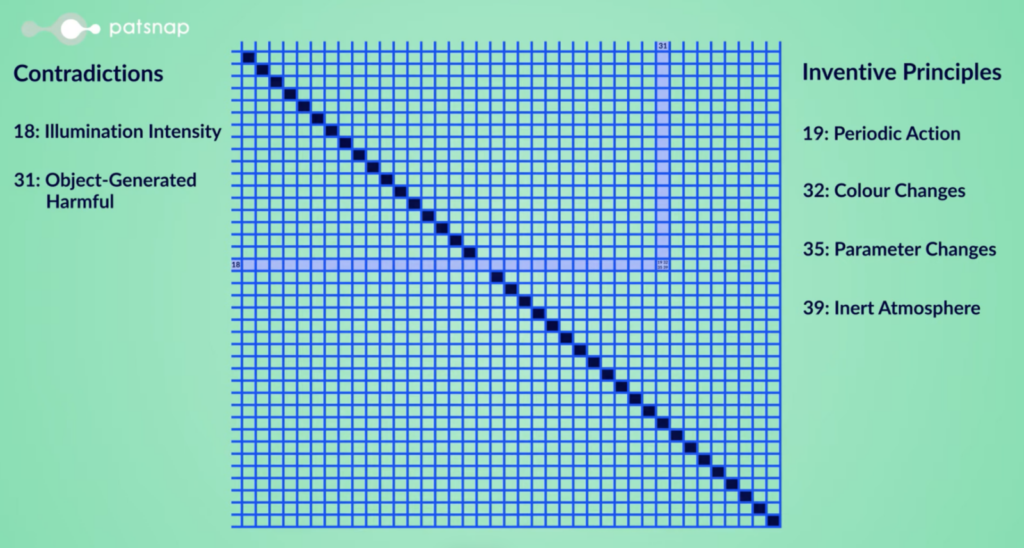Rethinking R&D: the power of TRIZ in problem-solving
In today’s fast-paced innovation landscape, R&D teams face mounting pressures to solve increasingly complex problems, deliver innovative solutions faster, and maintain a competitive edge. However, these challenges are often riddled with contradictions—balancing performance with cost, speed with precision, or size with strength.
Enter TRIZ, the Theory of Inventive Problem Solving: a time-tested, systematic approach that breaks through these contradictions. In this blog, we will uncover how the integration of TRIZ can help teams revolutionize R&D problem-solving, offering actionable insights and tools that deliver better results, faster.
What is TRIZ?
TRIZ is systemic approach to innovation developed in the mid-20th century by Genrikh Altshuller, a Soviet engineer who analyzed over 200,000 patents to identify patterns in successful problem-solving. His findings revealed that most inventive solutions followed universal principles and trends, leading to the development of TRIZ as a systematic framework.
Key TRIZ concepts:
- Engineering contradictions: Balancing conflicting requirements, such as creating a lightweight yet durable product.
- Inventive principles: TRIZ outlines 40 guiding principles for solving contradictions, such as segmentation, dynamics, and equipotentiality.
- Trends of system evolution: Predictable patterns technologies follow, offering insights into future innovations.
- Substance-field analysis: A modeling technique that abstracts problems to find new solutions.
- Contradiction matrix: A tool for identifying which inventive principles have historically been effective in resolving specific types of contradictions.
TRIZ’s strength lies in its ability to transform seemingly insurmountable problems into structured opportunities for innovation.
The TRIZ contradiction matrix
Shown below, the TRIZ contradiction matrix is a grid designed to resolve technical contradictions in systems. Each axis represents a set of parameters—factors that need to improve or are negatively affected by an improvement.

In this specific example, parameter 18 (illumination intensity) is a desirable feature that needs improvement, while parameter 31 (object-generated harmful effects) is an undesirable side effect that arises when illumination intensity is enhanced (e.g., heat or wear from brighter light sources).
The dark squares at the intersection of these parameters indicate inventive principles that can resolve this contradiction:
- Periodic action (principle 19): Introduce cyclic processes to manage the trade-off
- Color changes (principle 32): Use color or optical properties to reduce harm
- Parameter changes (principle 35): Adjust system parameters dynamically
- Inert atmosphere (principle 39): Create controlled environments to mitigate harmful effects
By identifying contradictions and linking them to proven solutions, the TRIZ matrix streamlines problem-solving, helping innovators develop more effective designs without relying on trial and error.
Turning problems into solutions
TRIZ is especially powerful in breaking down complex problems into viable solutions. Consider this classic example: walking barefoot on sharp stones. At first glance, it’s a specific issue, but TRIZ abstracts it into a universal problem—how to mediate harm between two substances (stones and feet). The inventive solution is introducing a third substance (shoes) to act as a barrier, resolving the contradiction.
This abstraction process allows R&D teams to move beyond the constraints of specific challenges and focus on broader principles that inspire innovation. Whether it’s designing materials for extreme environments or optimizing manufacturing processes, TRIZ transforms real-world issues into structured opportunities for impactful solutions.
While TRIZ provides a robust framework, its application can be time-intensive and requires expertise. Tools like Patsnap Eureka automate and augment the application of TRIZ, making it accessible to more teams and significantly reducing the time to actionable insights.
TRIZ in action: case study on gearbox innovation
A prime example of TRIZ’s potential is the development of the Galaxie® Drive by Wittenstein AG. The challenge? Traditional gearboxes couldn’t deliver high torque without increasing size, which also compromised durability.
Using TRIZ, the team tackled several contradictions:
- Torque vs. size: Higher torque typically required larger gears
- Durability vs. compactness: Smaller designs compromised longevity
By applying TRIZ principles like segmentation, dynamics, and equipotentiality, they developed a revolutionary gearbox design with:
- Six times the surface contact for improved torque transmission
- Zero-backlash kinematics for enhanced precision
- A compact, durable form factor
This solution, achieved in weeks instead of months, exemplifies the power of TRIZ in solving complex problems.
How R&D teams can benefit from the TRIZ framework
Integrating TRIZ with AI tools like Patsnap Eureka can transform R&D processes by enabling:
- Faster ideation: AI helps teams identify contradictions and inventive principles, speeding up the brainstorming process.
- Cross-industry insights: AI can analyze solutions from unrelated fields, such as how anti-lock braking systems inspired advancements in medical robotics.
- Predictive innovation: With trends of system evolution, teams can anticipate market needs and innovate proactively.
- Scalability: AI democratizes access to TRIZ by making it user-friendly for teams without specialized expertise.
Key considerations
While the benefits are clear, integrating TRIZ and AI into workflows may raise some concerns:
- Data quality: AI relies on high-quality data for accuracy. Teams should ensure their datasets are comprehensive and unbiased.
- Learning curve: While AI simplifies TRIZ, some initial training may be required to maximize its potential.
- Over-reliance on AI: Human oversight remains essential for validating AI-generated insights and ensuring practicality.
By addressing these challenges, organizations can fully unlock the potential of TRIZ and AI.
The future of TRIZ in R&D
As R&D challenges grow more complex, TRIZ remains a powerful framework for overcoming contradictions and accelerating innovation. By refining its application, teams can develop solutions more efficiently and with greater precision.
Looking ahead, TRIZ will continue evolving through:
- More intuitive modeling tools: Improving how contradictions and solutions are visualized
- Stronger collaboration features: Enabling teams to apply TRIZ principles more effectively
- Seamless integration with R&D workflows: Embedding structured problem-solving into daily processes
By adopting TRIZ, organizations can move beyond trial and error, unlocking faster, more effective innovation.